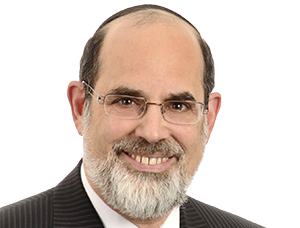There are wonderful, and even contradictory, interpretations of the numerous Jewish marriage rituals. Often the tendency is to link one ritual to a scriptural element. This association creates a sense of authority and validation – if our ancestors acted this way, it should be good enough for me. When we perform a specific act, we are not only reinforcing communal standards, we’re also rooting our own personal identity within the national one. Continuity, preservation and confirmation are all powerful themes and incentives.
Some of these rituals are truly historic and many are borrowed from our neighbours. This factor should not negate the value of observing particular marital customs. For example, some people like the formality of walking the bride down the aisle with her father giving her away. Perhaps the latter is outmoded, but these patterns, while clearly not Jewish, do not interfere with, or corrupt, the Judaic nature of the enterprise. Some try to modernize or modify the ceremony, while others attempt to maintain old patterns, claiming that nothing can be changed. Remarkably, there are those who prefer to have segregated seating at the ceremony. Jewish law does not mandate this separation, but many think it approximates the laws of mechitzah for prayer services. Yet, Rabbi Moshe Feinstein, the great legalist who was very strict on gender segregation, specifically noted that separating the sexes was not necessary for a wedding ceremony. Like many of our customs, this one depends on the couple, the attending rabbi and their appreciation of history.
READ: HOW JEWS HAVE ACTUALLY FELT ABOUT HEBREW, THROUGH HISTORY
Of course, there are some rituals that are required to make the ceremony a Jewish one, but there really are very few of them. The husband is obligated to give a gift – something of value – to the bride, he must declare his intentions in front of two unrelated witnesses and the couple must consummate the marriage. Without actual – not symbolic – sexual intercourse, there is no marriage. Over generations, elements have been added to this bare-boned ceremony.
Many societies have marriage contracts of one sort or another. The ketubah falls well within this general category, but its specificity offers insight into the rabbinic ideas of gender and marriage. Thus, it cannot now be eliminated or replaced by a notarized civil marriage contract. It has specific Jewish substance and connects the newly married couple to their ancestors.
Significantly, the veiling of the bride, known as the bedecken, is not practiced in all communities. Commentators opine that this ceremony was installed in order to avoid replicating Jacob’s predicament. Jacob was tricked into marrying Leah, instead of his intended, Rachel. Thus, interpreters note that by having the man veil the woman, we make sure that he is confident he is marrying his chosen.
I can offer a different view. In the popular TV show Game of Thrones (I confess to being addicted), the groom covers the bride with his cloak. This action is celebrated as the moment when he publicly brings her under his protection. There are many symbolic elements present here, but it seems to me that this probably accurate historical note parallels our veiling ceremony. By cloaking or veiling the other, the active partner – always the male in our patriarchal world – clarifies the marital roles: he is qualified to protect her; he is accepting responsibility for her.
Both rituals display the same legal and social concepts – the man is in charge; the woman is vulnerable.
But we have one further ritual dance that introduces a level of gender balance (not egalitarianism). When the bride circles the groom seven times, can we say that she is bringing him into her realm of domestic protection? Is she symbolically building their house? Does this echo Joshua circling the walls of Jericho to defeat them? Is this ritual the counterpart to the veiling ritual? Is the house-building element a replication of standing under the chupah, suggesting they create a home together? She declares, “I create a house for, or with, him,” while he cloaks/veils her, bringing her into his home.
None of these rituals are required, but they do add a level of intrigue, history, heritage and gender management or exhibition to our weddings.
What fun!







